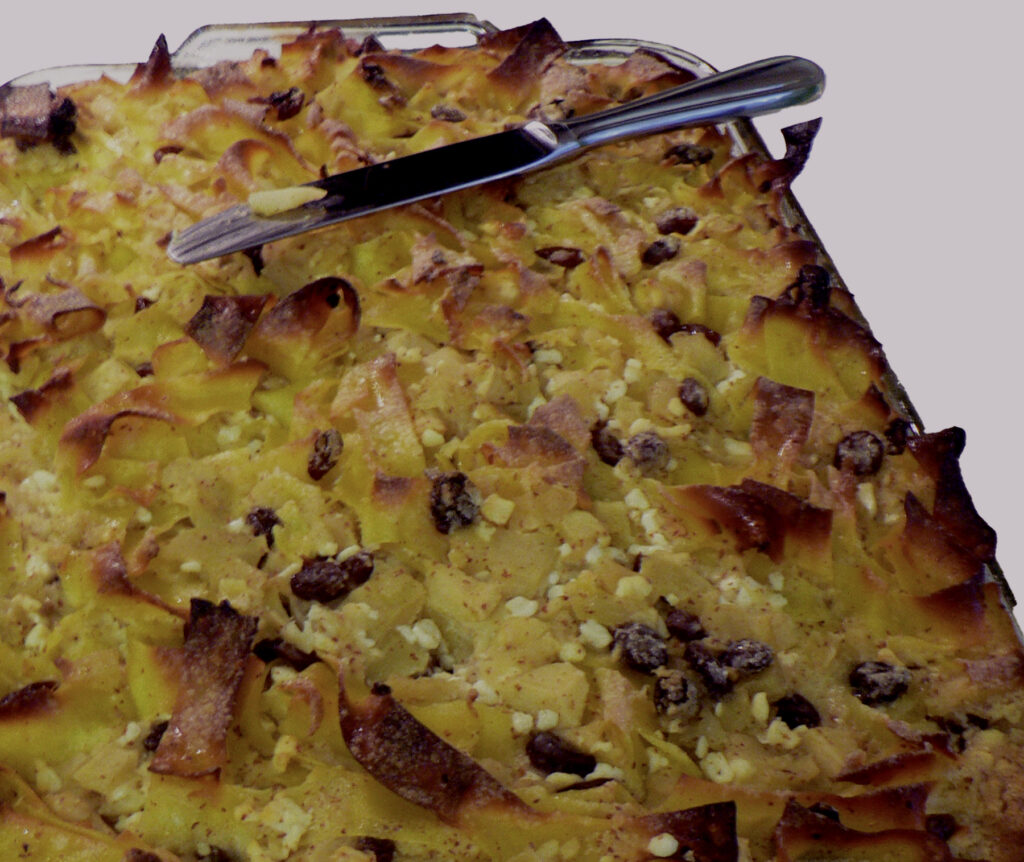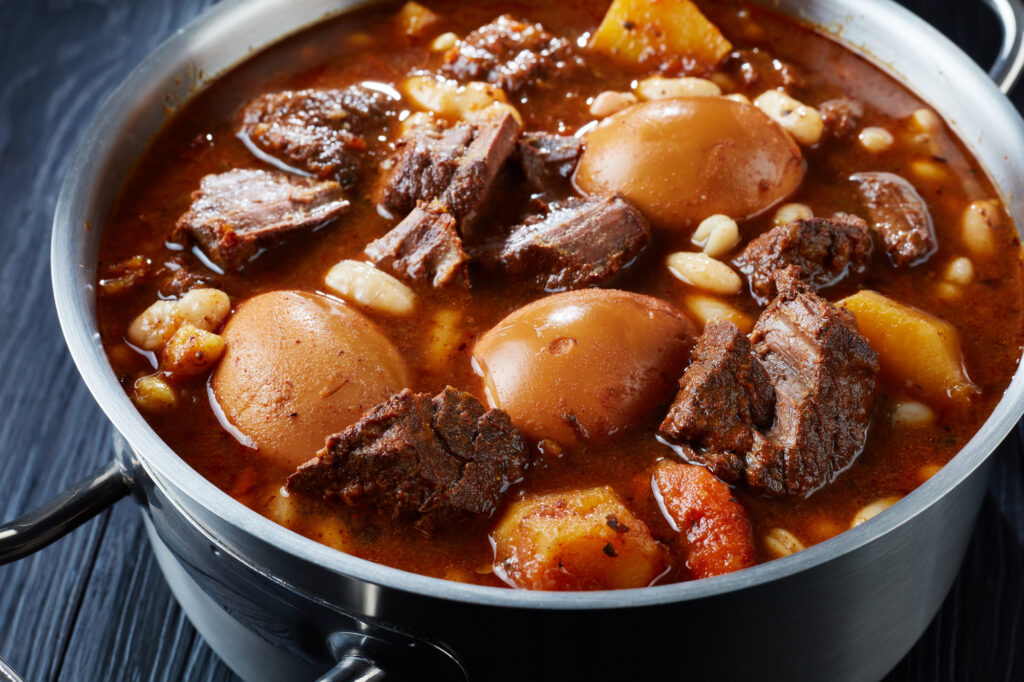Stuart Spivak, Wikimedia Commons
I can’t fight it.
Whenever there’s a family holiday dinner I head straight for the kugel.
Thank Stacey for my obsession. Although a Gen Xer, she makes sweet buttery kugel with a crunchy top – like they did hundreds of years ago.
What’s kugel? Joel Haber in The Taste of Jewish Culture describes it as a “simple food that’s not so simple.” There are four basic ingredients: starch (like noodles or potatoes), eggs, fat, and seasonings. No water. It can be savory or sweet – that’s up to the cook.
Kugel began life as a dumpling, over 800 years ago. In twelfth century Germany, Jews made a Sabbath (Saturday) slow-cooked stew called cholent. Cooking on the Sabbath was forbidden by religious law (it was considered work). Cholent was made on Friday, slow-cooked overnight in an oven, and eaten warm the next day after services.
The ovens were mostly communal at cooking and baking houses. Home ovens didn’t become popular until the late 1800s.
The Diaspora (the scattering of Jews from their homeland to places around the world) led to many local varieties. Cholent included ingredients that reflected the region and family. For example, Ashkenazi Jews (Eastern Europe) used beans, barley, potatoes and meat. Sephardic Jews (Spain and Portugal) used chickpeas, meats, potatoes, eggs, and spices. The basics were the same – slow-cooked overnight in the oven.
What does cholent have to do with kugel?
To make it more nutritious, a bread batter prepared with eggs was dropped into the stew. The result was tasty dumplings. Perhaps too many fell apart? Eventually, they were steamed in a separate clay pot on top of the stew. The steam kept the dumplings moist and pudding-like. Gil Marks, in Jamie Geller, noted that new names were given to the “pudding,” – weckschalet, semmelkugel, and schaletkugel.
Medieval Jews, Compliments of Wikimedia Commons
The recipe evolved and by the 1600s kugel was a stand-alone, pudding-like, baked dish. Marks believed it was because “cooks substituted farfel and noodles and on Passover, matza for the bread batter.”
Today in western Europe it’s called schalet; in Eastern Europe and America, it’s called kugel or noodle pudding. The pronunciation depends on the region. Either way, “this dish ranks high in the pantheon of Jewish foods.”
The kugel starch evolved from bread to rice, noodles, potatoes, and corn. Seasonings also changed, new additions included onions, sugar, cheese, dairy, and black pepper.
When Jews immigrated to England and America they brought kugel with them, creating what Haber calls a Kugel Culture that “has grown into more than a popular Ashkenazi side dish [with] passionate arguments” over ingredients and seasonings.
These days you can find types like Stacey’s kugel (technically lokshen kugel) made with noodles, a lot of butter, sugar, eggs, and a touch of cinnamon. Sometimes she adds raisins or craisins. Her potato kugel is savory with grated white potatoes, onions, eggs, and seasonings.
There are many other versions, from applesauce to plum and cottage cheese to sweet potatoes. Perhaps the most unique is Jerusalem Kugel or kugel yerushalmi, a dark, dense dish made from thin egg noodles, sugar, and black pepper. It’s believed to date back to the 1700s when thousands of Hasidic Jews moved to Jerusalem, introducing the sweet and peppery dish.
Kugel can be eaten every day or just on holidays – hot, warm, or cold. It can be a side-dish or dessert. Or it can be Stacey’s magic. It’s easy to make at home; you can buy it fresh in many stores and Jewish delis; it’s even available frozen. There are so many delicious recipes, from the one handed down from Grandma to Tori Avey, Ina Garten, Martha Stewart, and of course, Stacey.
As the Yiddish saying goes, “I’m just here for the kugel.”






If Stacey opens a kugel restaurant, we are there! And when we walk in, I will say “I’m just here for the kugel!” But of course we would be there to see you first! This is one of my favorite articles of yours. The history, it covers so much of the world over such a long time… An article like this helps give me a perspective on the great march of time and civilization that I did not have before. Thank you for this great series!